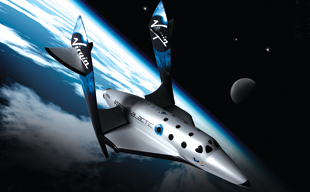INDIAN ARMED FORCES CHIEFS ON
OUR RELENTLESS AND FOCUSED PUBLISHING EFFORTS

SP Guide Publications puts forth a well compiled articulation of issues, pursuits and accomplishments of the Indian Army, over the years

I am confident that SP Guide Publications would continue to inform, inspire and influence.

My compliments to SP Guide Publications for informative and credible reportage on contemporary aerospace issues over the past six decades.
Flights of Fantasy

The cosmos beckons the travel bug and every endeavour is being made to ensure safety and affordability even as more aspiring space tourists queue up for the out-of-the-world experience.
April 12, 1961. Singing Rodina slooshaet, Rodina znayet (The Motherland listens, the Motherland knows) where her son flies in the sky, Russian Cosmonaut Yuri Gagarin was blasted off aboard the spacecraft Vostok 1. The first human being in space fired the imagination of entire mankind for a chance to zoom into the cosmos.
Subsequently, the US successfully manned Apollo missions to the Moon and such explorations were symbolised by wide public access to space, mostly in the form of space tourism. Aspirations were immortalised in science fiction works, such as Arthur C. Clarke’s A Fall of Moondust and also 2001: Space Odyssey. The famous Jules Verne wrote on space and Moon travels in his unforgettable From the Earth to the Moon and Around the Moon. In the 1960s and 1970s, it was common belief that space hotels would be launched by 2000 and an average family of the early 21st century would be able to enjoy a holiday on the Moon. The early enthusiasm, however, received a setback with the end of the space race which was signified by the Moon landing and which led to decreased demands, at least for a while, for public funding of manned space flights.
Fortunately, the lull did not last long and the Soviets established Mir (peace and world), a permanent manned station in space. Mir was humanity’s first consistently inhabited long-term station in space and the first third generation space station constructed over a number of years with a modular design. Mir not only held the world record for longest continuous human presence in space at just short of 10 years but, in the process and through a number of collaborations, was made internationally accessible to cosmonauts and astronauts of many countries.
In the late 1990s, breakup of the former Soviet Union and the resulting economic chaos gave the Russian MirCorp (a private venture by then) a bright idea: to seek potential space tourists to visit Mir to offset some of its maintenance costs.





